Fulfilling the mission
New education building a boon for Brody School of Medicine
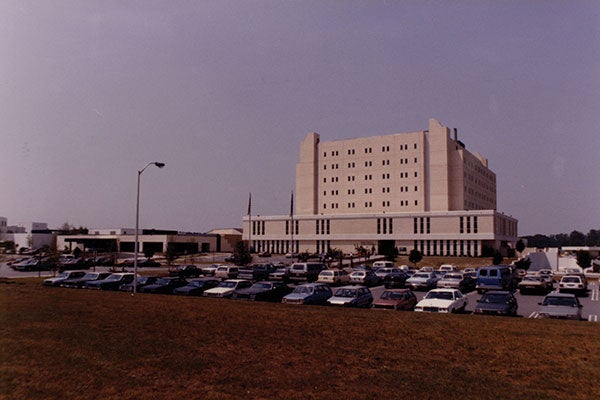
Built at a cost of $26 million (or about $92.4 million today) and opening in 1981, the Brody Medical Sciences Building comprised nine floors (including the basement) and 476,000 square feet.
Fittingly on National Rural Health Day, Nov. 21, a crowd gathered on the East Carolina University Health Sciences Campus to ceremonially break ground on the new Center for Medical Education Building.
Speakers paused as EastCare helicopters buzzed overhead, returning to campus following patient transports. Two excavators suspended a large American flag over a mound of sand dignitaries and others would soon dig their shovels into. The venerable Brody Medical Sciences Building towered nearby.
“There is a shortage of primary care doctors in our country that’s acute for rural Americans,” said Chancellor Philip Rogers. “We thank our state’s elected leaders and the people of North Carolina for their trust in our commitment to improve rural health and well-being. We pledge to steward this public investment in service of our medical students — the next generation of highly trained physicians giving patients throughout our state lifesaving help and hope.”
The N.C. General Assembly approved a total of $265 million for planning and constructing the seven-story, 195,000-square-foot building, which will be connected to the existing Brody Medical Sciences Building at every level. Faculty, alumni and supporters describe the building as an expansion that is long overdue.
“The facility is 100% designed with the students in mind,” said Dr. Jason Higginson, Brody’s executive dean. “Medical school is so rigorous. Success depends both on labs and hands-on learning environments along with quiet and comfortable spaces that host hours and hours of quiet study. Our students need all of it before they begin treating patients in clinical settings. They have it here at the Brody School of Medicine.”
The facility will also accommodate larger class sizes than the Brody Building; school leaders expect classes to increase to 120 students once the expansion is complete.
Dr. Michael Waldrum, dean of the medical school and CEO of ECU Health, said having a modern, contemporary facility is important when trying to attract top-tier faculty and students.
“I think that people want to be here. We have a great culture, and we have a really strong and important mission,” Waldrum said. “Having a facility and support infrastructure that promotes that is really important.”
Here are plans for the Center for Medical Education Building
- Two learning studios that can seat up to 500 people in a lecture/banquet style setting or transform into classrooms, meeting or seminar spaces seating up to 136 in each studio
- Flexible spaces including huddle rooms, pod-like collaboration spaces and small-group student spaces
- A roof terrace and green space
- A new home for simulation and standardized patient programs
- Four student houses – common spaces that will serve as a “home” for students to study, including lockers, changing areas and study carrels, serving blended groups of first-year to fourth year students
- New gross anatomy space to include 28 beds
- Large instructional lab classroom for neurology, pathology and immunology with seating up to 144
- Lawn space for special events and ceremonies
- A 500-car parking garage to be constructed on the Health Sciences Campus
Evolution of a dream
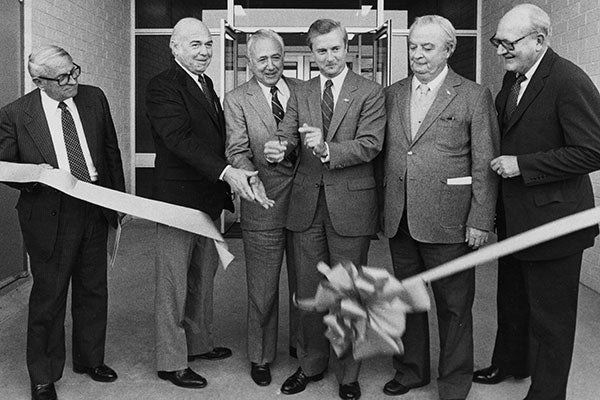
On Oct. 29, 1982, from left, ECU Chancellor John Howell, benefactors Sammy and Leo Brody, Gov. Jim Hunt, Chancellor Emeritus Leo Jenkins and Dean William Laupus cut the ribbon on the new Brody Building.
Since the 1960s, the Brody family has supported health sciences education and research at ECU. Family patriarchs Morris, J.S. “Sammy” and Leo Brody supported Chancellor Leo Jenkins’ drive to build a medical school at ECU, and in 1973 the family donated to the construction of what would become the Brody Medical Sciences Building.
“We are proud of the incredible progress made so far with limited resources. This investment by the legislature to ECU Health and the Brody School of Medicine will only continue the wonderful mission for many years and beyond,” said Hyman J. Brody II. “This investment is a continued testament to what vision, community commitment and innovation can accomplish.”
He and his cousin David Brody have witnessed the growth of the school and the growth of demand in eastern North Carolina for doctors, physician assistants, nurses and other health care workers.
“I think the investment in the new building shows the legislature’s acknowledgement of the school’s success in fulfilling the mission,” he said. “It shows the value of the school not just to the region, but to the whole state.”
Construction is expected to start in March, and when it opens in 2027, the Center for Medical Education Building will feature modern classrooms, anatomy labs and simulation technology integrated with flexible spaces, collaboration rooms, small-group student spaces and green infrastructure. Sections of the building will be designed as houses for four blended cohorts of Brody students. Common spaces will serve as a home for students to study, gather and recharge. Higginson said the simulation and standardized patient spaces will be one of the many benefits to students.
“Those are learning studios where they’re going to learn the physical hands-on skills of being a physician. I think that is just going to be a huge upgrade,” Higginson said. “That’s the real heart and soul of being a doctor. How do you interact with a patient? How do you convey empathy? We’re going to be able to teach them that in state-of-the-art spaces. Those are really important formative events for students, and I think the building is designed to do that at the top level.”
The Brody Building will continue to house faculty offices, research labs and services critical to the mission of educating physicians. Higginson and Waldrum say the goal is to improve current spaces over time.
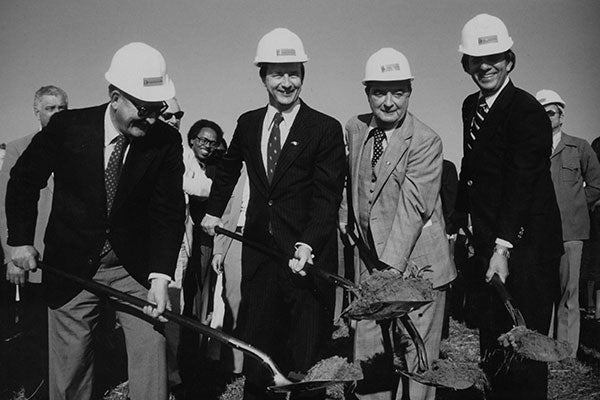
From left, Dean William Laupus, Gov. Jim Hunt, Chancellor Emeritus Leo Jenkins and Chancellor Thomas Brewer break ground March 30, 1979, for what would become the Brody Medical Sciences Building.
Creating the next chapter
From classrooms and labs at Ragsdale Hall on ECU’s Main Campus to the Brody Medical Sciences Building — and many mobile office units that have come and gone on the Health Sciences Campus — 3,511 physicians have earned medical degrees at ECU. Once it opens, the Center for Medical Education Building will create a new facade and entryway for the medical school.
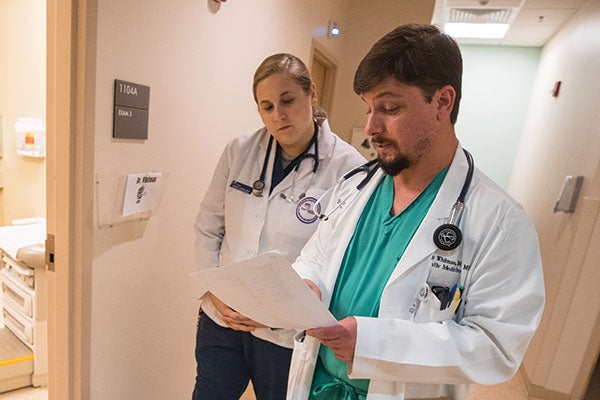
Dr. Audy Whitman ’05 ’06 ’13, rural residency program director ECU Department of Family Medicine.
Dr. Audy Whitman ’05 ’06 ’13, rural residency program director in the Department of Family Medicine, said the new building will allow ECU to continue to provide an exceptional education experience.
“The current facility has served eastern N.C. well for the past half century, but it is time for an upgrade as the wear and tear of educating decades of physicians is beginning to show,” he said. “I am hopeful that these new and expanded facilities will be an inviting place that beckons mission oriented medical students to the region to become part of something that is and will continue to be special.”
Fourth-year medical student Shantell McLaggan of Thomasville, North Carolina, participated in the groundbreaking for the new building. She’s a little disappointed she won’t get to study there but has good memories of her years in the Brody Building and encouraged students to make their time in the new building special.
“Make it your own, because you’re going to be spending a lot of time there,” she said.
Naming opportunities
While it is a state building, there will still be a need to raise some money for it and other priorities across the health sciences. In September, Waldrum presented the ECU board of trustees a menu of naming opportunities.
More than 190 options have been identified within the building. Premier giving opportunities include naming the building, a clinical training floor, learning studio, terrace, plaza and more. More about the expansion and donor opportunities is at the ECU Health Foundation website.
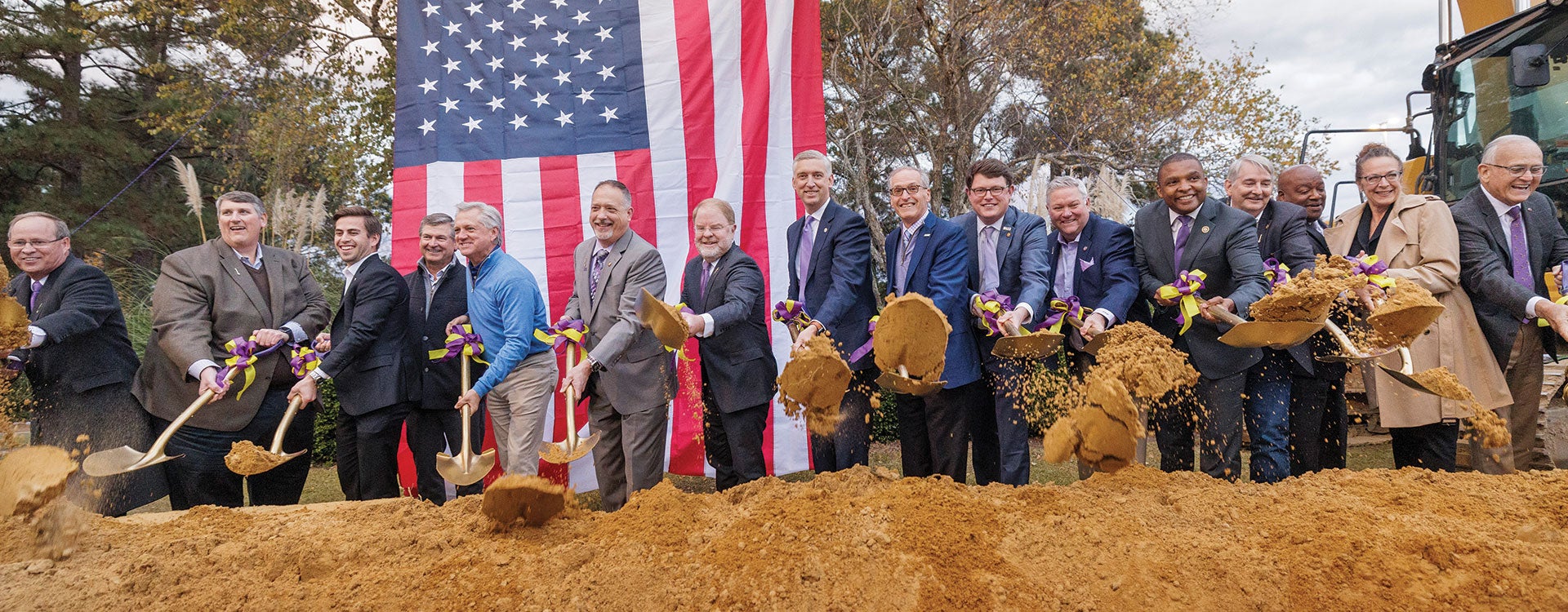
Among those participating in the Nov. 21, groundbreaking for the new medical building were, from left, U.S. Rep. Greg Murphy; Jason Poole, chair of the ECU board of trustees; Anderson Ward, student body president; former trustee Kel Normann; trustee Fielding Miller; N.C. Rep. Ray Pickett; UNC System President Peter Hans; ECU Chancellor Philip Rogers; Mike Waldrum, dean of the Brody School of Medicine and CEO of ECU Health; former N.C. Rep. Brian Farkas; N.C. Rep. Chris Humphrey; U.S. Rep. Don Davis; N.C. Sen. Buck Newton; ECU trustee Vince Smith; and Cassie Burt, vice chair of the board of trustees.